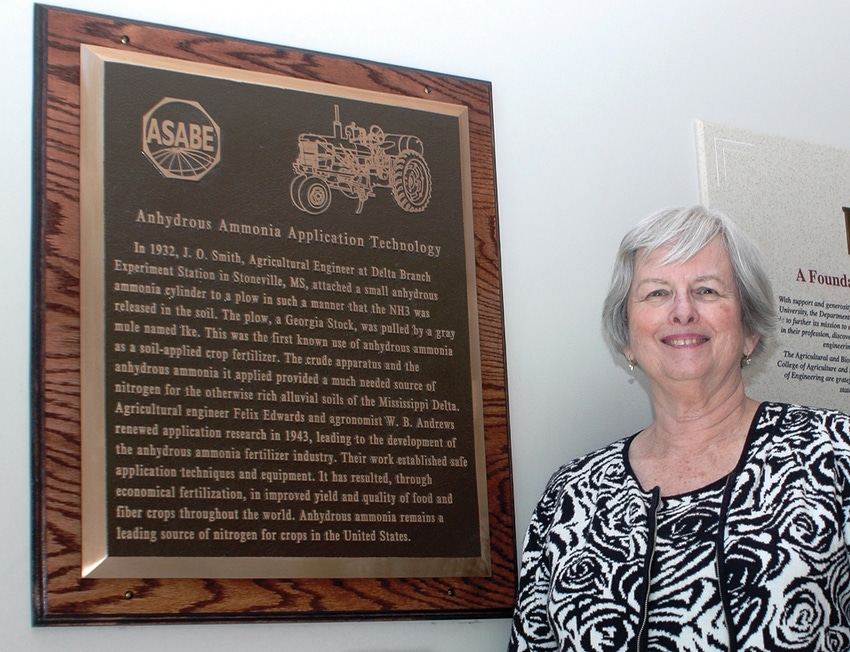
MSU receives plaque for NH3 application
The plaque honors the achievements of MSU faculty members J.O. Smith, Felix Edwards and W.B. Andrews, all deceased. The American Society of Agricultural and Biological Engineers had initially unveiled a historic landmark plaque in April at Mississippi State University’s Agricultural and Biological Engineering Building.
August 16, 2011

Three early agricultural engineers were recognized early this year at Mississippi State University’s Delta Research and Extension for their work with the development of anhydrous ammonia technology. Their research gave birth to Mississippi Chemical Corp., the state’s first Fortune 500 company.
The plaque honors the achievements of MSU faculty members J.O. Smith, Felix Edwards and W.B. Andrews, all deceased. The American Society of Agricultural and Biological Engineers had initially unveiled a historic landmark plaque in April at Mississippi State University’s Agricultural and Biological Engineering Building.
The plaque is the 56th marker placed around the country by ASABE. Other markers commemorate inventions and milestones such as the McCormick reaper, the John Deere plow, the New Holland hay baler and Eli Whitney’s cotton gin. Mississippi hosts another marker for agricultural aviation in Jackson.
Herb Willcutt, recently retired agricultural engineer with MSU’s Extension Service, said the recognition application process is long and detailed. MSU faculty members began the petition process three years ago.
In 1932, Smith attached a small metal cylinder to a tractor to release the gaseous liquid into soil at the Stoneville facility. This was the first known use of anhydrous ammonia as a soil-applied crop fertilizer. The crude apparatus provided a much-needed source of nitrogen for the rich alluvial soils of the Mississippi Delta.
Edwards, an agricultural engineer at MSU and Andrews, an agronomist there, renewed application research in 1943.
Agronomist Wayne Ebelhar and agricultural engineer Lyle Pringle handled details for the plaque and presentation at DREC.
You May Also Like



